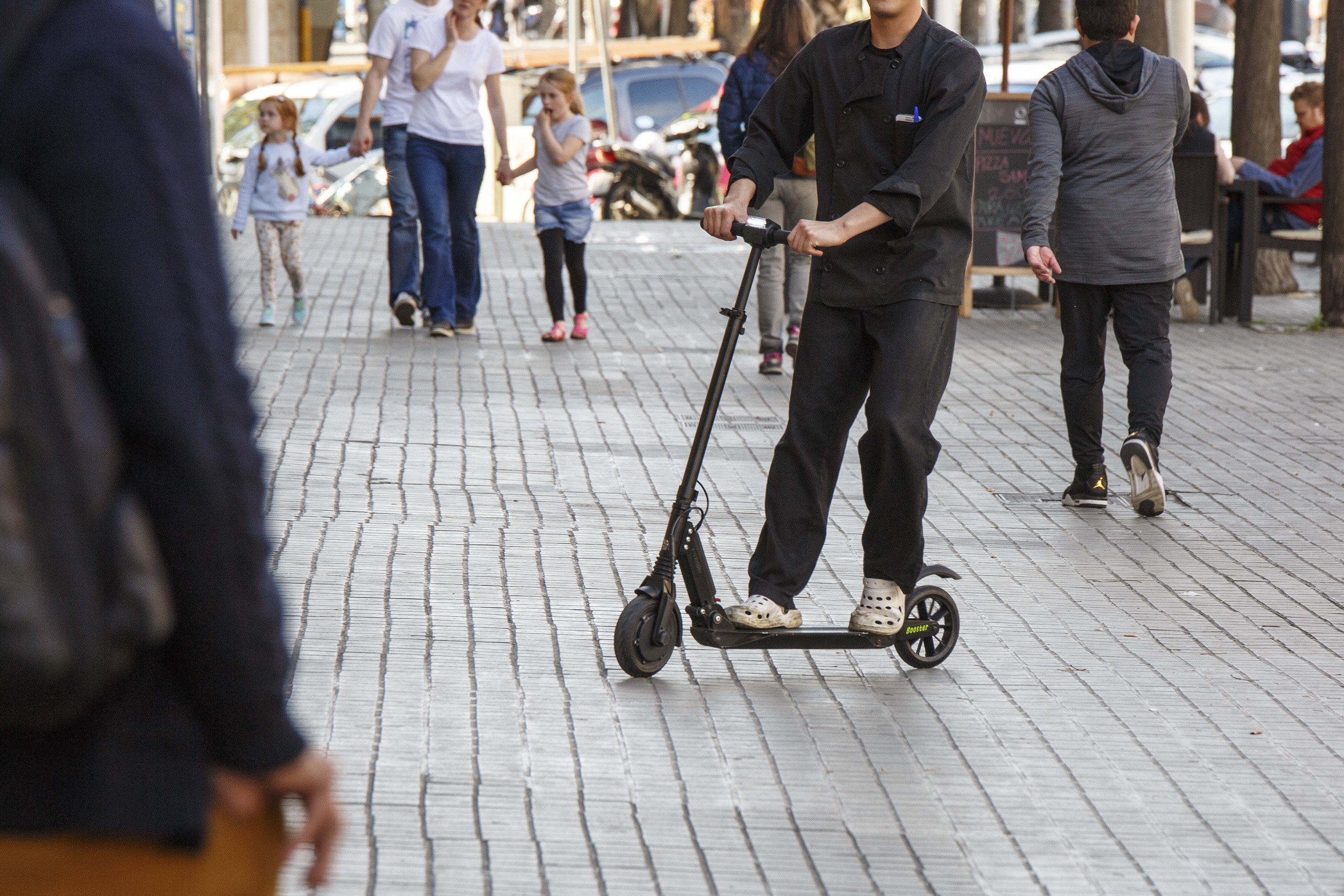Barcelona City Council will restrict the use of Segways and other types of personal mobility vehicles for tourism in the centre of the Catalan capital. This announcement was made by the councillor for the Ciutat Vella district, Gala Pin, in a press conference this morning.
The measure, designed to combat the excessive numbers of tourists in the neighbourhood, will apply to companies that rent out these types of vehicle but not to the residents that use this mode of transport. The decision comes days after the acts of vandalism against tourists carried out by Arran, a youth organisation linked to the CUP (Popular Unity Candidacy) party.
The city councillor for Ciutat Vella, Gala Pin, announces the new decree that will restrict the use of vehicles for tourism in the district / Sergi Alcàzar
The new attempt by the City Council to reduce the impacts of tourism will be implemented through a decree that will come into force in 15 days, giving businesses a fortnight to adapt themselves to the changes.
The municipal government will inform the businesses that rent Segways and other electronic gadgets of the measure so that they can make the necessary modifications before it comes into effect. Once that happens at the end of August, the City Council will start to fine the users of rented vehicles.
Tourism restrictions
"Vehicles aren't being restricted, only using them", explained Pin, who insisted that the measure only affects vehicles being used commercially. In this way, Ada Colau's government has just consummated its offensive against electric scooters in an area of the city where the demand from tourists is high.
And how will they avoid confusions and know if a vehicle is being used privately or for tourism? According to Pin, the distinction carried by for-hire electric scooters since last June will be enough. At that time a law was approved that limits them around the Catalan capital.
Restricted Zones
The whole Ciutat Vella district will be affected by the measure with the exception of two specific routes: with the first, people will be able to go from Portal de la Pau along passeig de Colon, passeig d'Isabel II, Marqués de l'Argentera and passeig de Cimcumval·lació; with the second, rented vehicles also will continue to appear on passeig de Picasso, de Lluís Companys, passeig de Pujades up to avinguda Meridiana. In practical terms for tourists, the first starts at the statue of Christopher Columbus and ends by going around the Parc de la Ciutadella, one of Barcelona's largest parks, which contains the Catalan parliament and the city zoo. The second follows the other side of the park and goes up to the Arc de Triomf.
The other districts will be affected by the measure for six months, the time for which the decree has effect. During this time, tourists who have rented a vehicle will have to push it along on foot if they want to go along the prohibited streets. In January, once the decree's validity ends, as Pin said, "the results will be evaluated" to analyse choices in the rest of the city.
Affected vehicles
The personal mobility vehicles affected will be electrical scooters, cycles, electric chairs and Segways that Colau's government already restricted with June's law. These electrical gadgets have gained in popularity recently, especially in the tourism sector, which has provoked, according to the City Council, an "overuse" of the public space in Barcelona.
In this way, the City Council wants to revert the impacts of tourism with one more measure, in addition to those like the restriction on renting accommodation to tourists and on the construction of new hotels.


